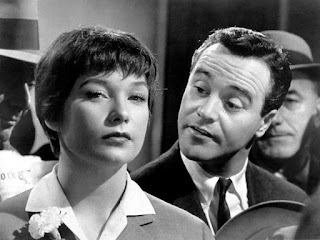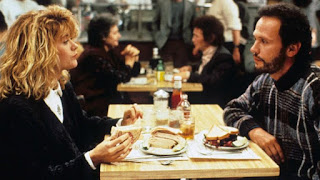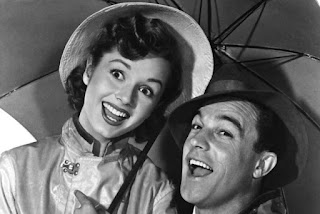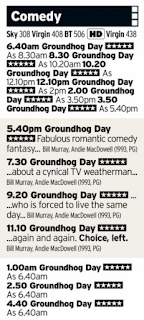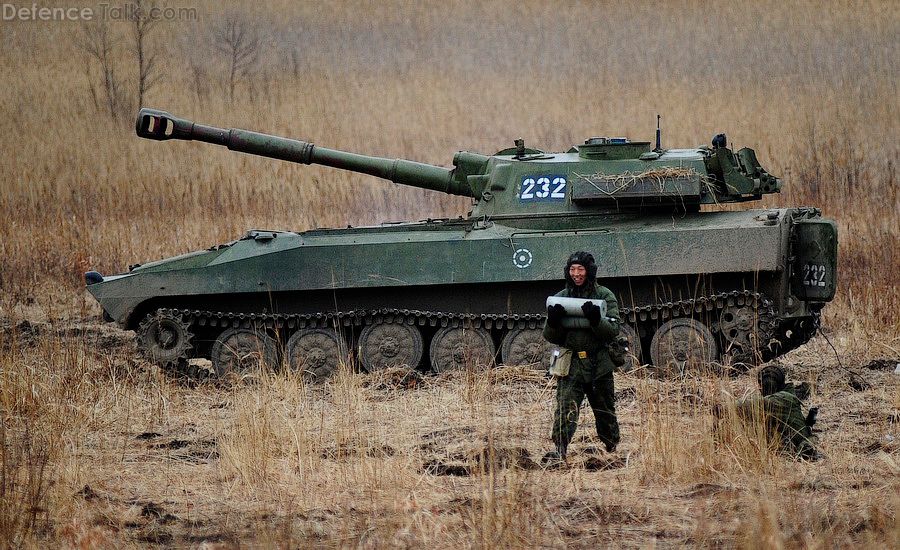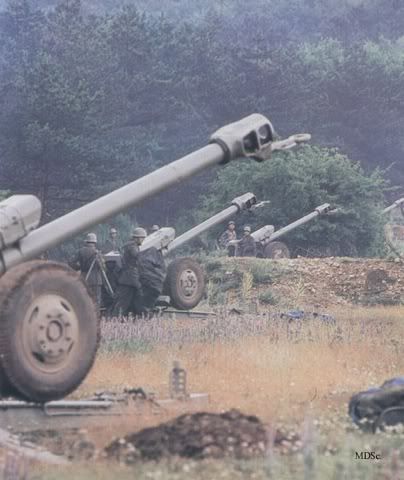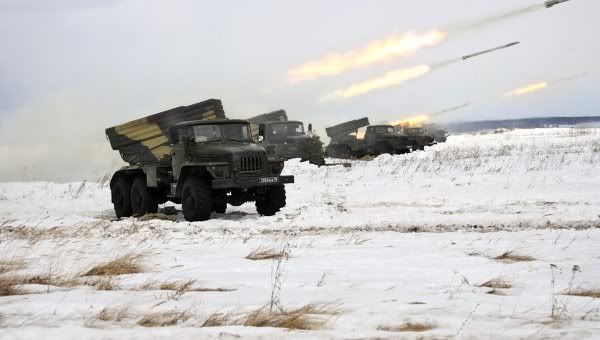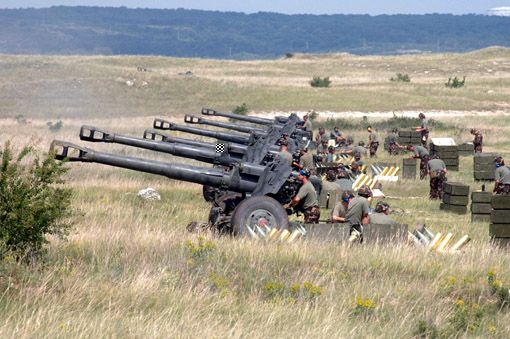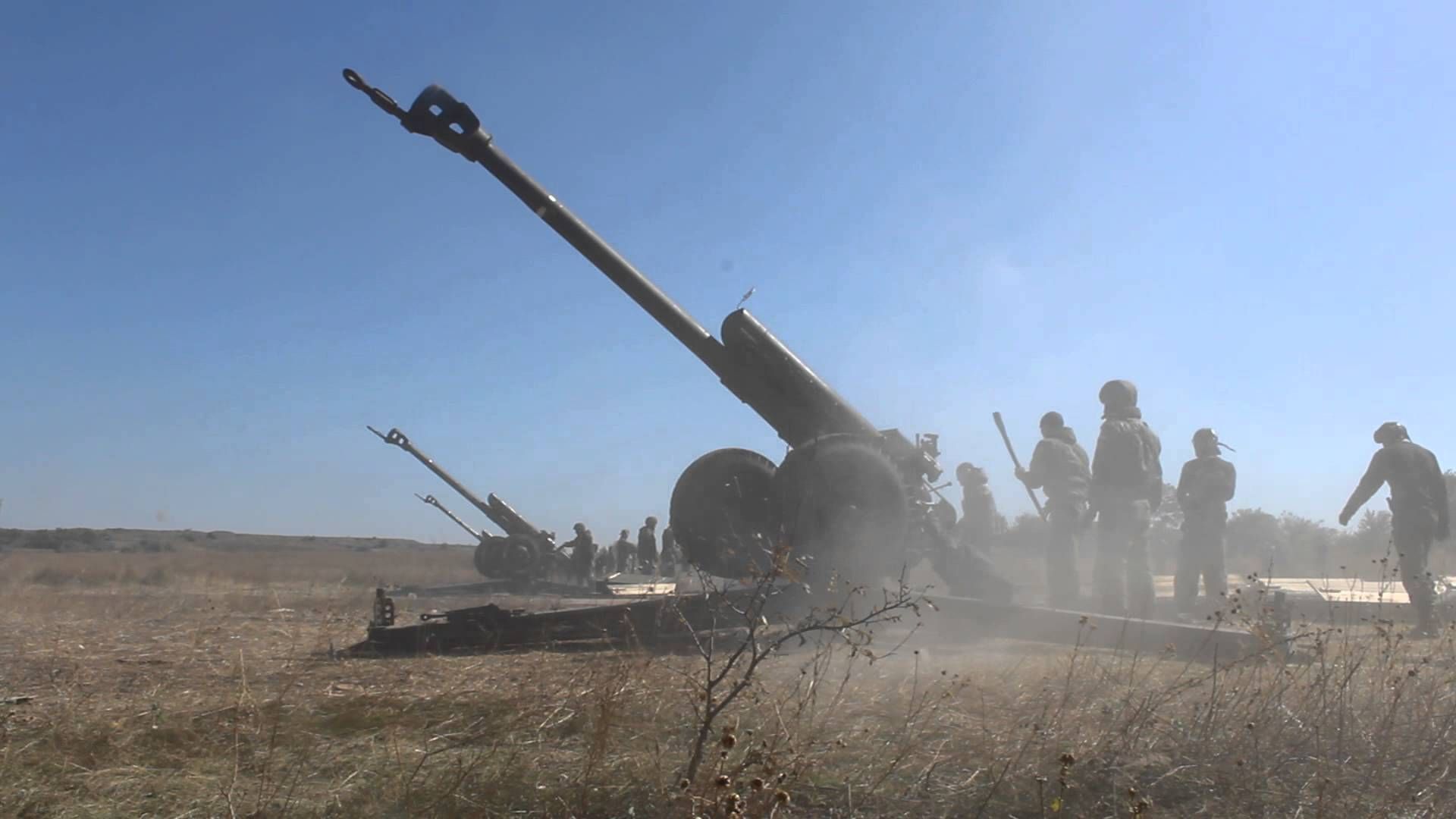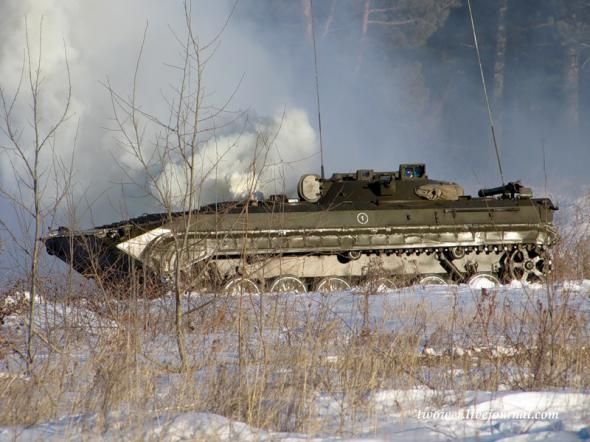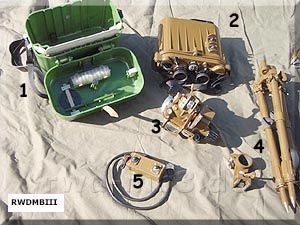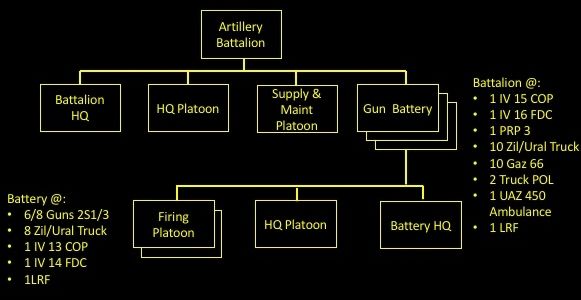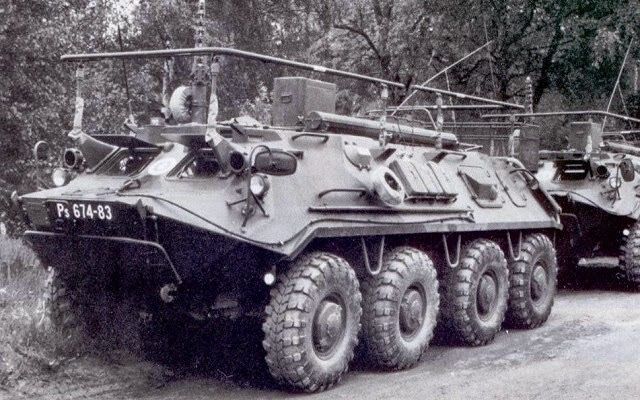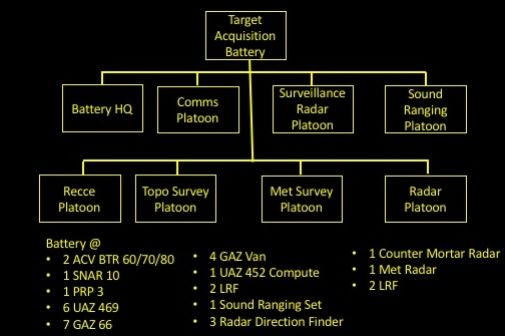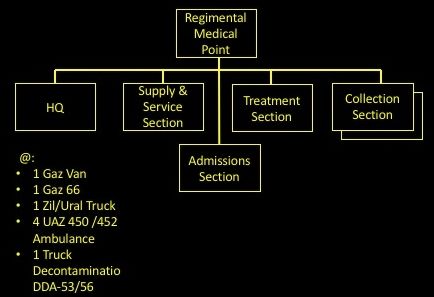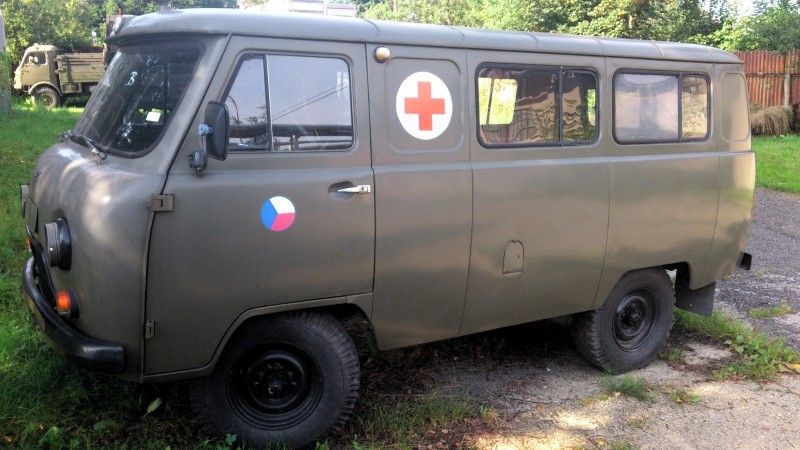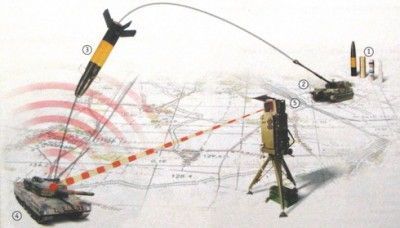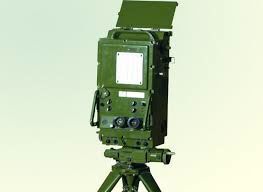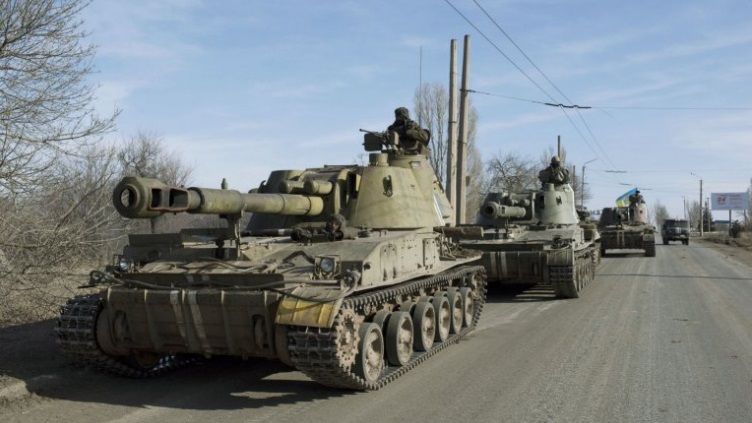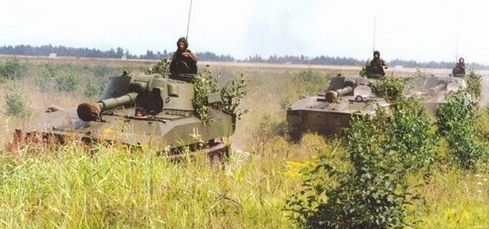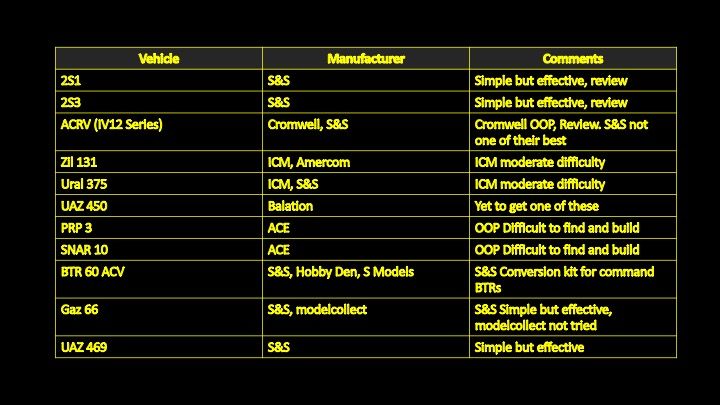Clk.sh
Clk.sh is a newly launched trusted link shortener network, it is a sister site of shrinkearn.com. I like ClkSh because it accepts multiple views from same visitors. If any one searching for Top and best url shortener service then i recommend this url shortener to our users. Clk.sh accepts advertisers and publishers from all over the world. It offers an opportunity to all its publishers to earn money and advertisers will get their targeted audience for cheapest rate. While writing ClkSh was offering up to $8 per 1000 visits and its minimum cpm rate is $1.4. Like Shrinkearn, Shorte.st url shorteners Clk.sh also offers some best features to all its users, including Good customer support, multiple views counting, decent cpm rates, good referral rate, multiple tools, quick payments etc. ClkSh offers 30% referral commission to its publishers. It uses 6 payment methods to all its users.- Payout for 1000 Views: Upto $8
- Minimum Withdrawal: $5
- Referral Commission: 30%
- Payment Methods: PayPal, Payza, Skrill etc.
- Payment Time: Daily
Wi.cr
Wi.cr is also one of the 30 highest paying URL sites.You can earn through shortening links.When someone will click on your link.You will be paid.They offer $7 for 1000 views.Minimum payout is $5.
You can earn through its referral program.When someone will open the account through your link you will get 10% commission.Payment option is PayPal.- Payout for 1000 views-$7
- Minimum payout-$5
- Referral commission-10%
- Payout method-Paypal
- Payout time-daily
Ouo.io
Ouo.io is one of the fastest growing URL Shortener Service. Its pretty domain name is helpful in generating more clicks than other URL Shortener Services, and so you get a good opportunity for earning more money out of your shortened link. Ouo.io comes with several advanced features as well as customization options.
With Ouo.io you can earn up to $8 per 1000 views. It also counts multiple views from same IP or person. With Ouo.io is becomes easy to earn money using its URL Shortener Service. The minimum payout is $5. Your earnings are automatically credited to your PayPal or Payoneer account on 1st or 15th of the month.- Payout for every 1000 views-$5
- Minimum payout-$5
- Referral commission-20%
- Payout time-1st and 15th date of the month
- Payout options-PayPal and Payza
Adf.ly
Adf.ly is the oldest and one of the most trusted URL Shortener Service for making money by shrinking your links. Adf.ly provides you an opportunity to earn up to $5 per 1000 views. However, the earnings depend upon the demographics of users who go on to click the shortened link by Adf.ly.
It offers a very comprehensive reporting system for tracking the performance of your each shortened URL. The minimum payout is kept low, and it is $5. It pays on 10th of every month. You can receive your earnings via PayPal, Payza, or AlertPay. Adf.ly also runs a referral program wherein you can earn a flat 20% commission for each referral for a lifetime.Linkbucks
Linkbucks is another best and one of the most popular sites for shortening URLs and earning money. It boasts of high Google Page Rank as well as very high Alexa rankings. Linkbucks is paying $0.5 to $7 per 1000 views, and it depends on country to country.
The minimum payout is $10, and payment method is PayPal. It also provides the opportunity of referral earnings wherein you can earn 20% commission for a lifetime. Linkbucks runs advertising programs as well.- The payout for 1000 views-$3-9
- Minimum payout-$10
- Referral commission-20%
- Payment options-PayPal,Payza,and Payoneer
- Payment-on the daily basis
LINK.TL
LINK.TL is one of the best and highest URL shortener website.It pays up to $16 for every 1000 views.You just have to sign up for free.You can earn by shortening your long URL into short and you can paste that URL into your website, blogs or social media networking sites, like facebook, twitter, and google plus etc.
One of the best thing about this site is its referral system.They offer 10% referral commission.You can withdraw your amount when it reaches $5.- Payout for 1000 views-$16
- Minimum payout-$5
- Referral commission-10%
- Payout methods-Paypal, Payza, and Skrill
- Payment time-daily basis
CPMlink
CPMlink is one of the most legit URL shortener sites.You can sign up for free.It works like other shortener sites.You just have to shorten your link and paste that link into the internet.When someone will click on your link.
You will get some amount of that click.It pays around $5 for every 1000 views.They offer 10% commission as the referral program.You can withdraw your amount when it reaches $5.The payment is then sent to your PayPal, Payza or Skrill account daily after requesting it.- The payout for 1000 views-$5
- Minimum payout-$5
- Referral commission-10%
- Payment methods-Paypal, Payza, and Skrill
- Payment time-daily
Short.am
Short.am provides a big opportunity for earning money by shortening links. It is a rapidly growing URL Shortening Service. You simply need to sign up and start shrinking links. You can share the shortened links across the web, on your webpage, Twitter, Facebook, and more. Short.am provides detailed statistics and easy-to-use API.
It even provides add-ons and plugins so that you can monetize your WordPress site. The minimum payout is $5 before you will be paid. It pays users via PayPal or Payoneer. It has the best market payout rates, offering unparalleled revenue. Short.am also run a referral program wherein you can earn 20% extra commission for life.Short.pe
Short.pe is one of the most trusted sites from our top 30 highest paying URL shorteners.It pays on time.intrusting thing is that same visitor can click on your shorten link multiple times.You can earn by sign up and shorten your long URL.You just have to paste that URL to somewhere.
You can paste it into your website, blog, or social media networking sites.They offer $5 for every 1000 views.You can also earn 20% referral commission from this site.Their minimum payout amount is only $1.You can withdraw from Paypal, Payza, and Payoneer.- The payout for 1000 views-$5
- Minimum payout-$1
- Referral commission-20% for lifetime
- Payment methods-Paypal, Payza, and Payoneer
- Payment time-on daily basis
الجمعة، 29 مارس 2019
(Latest) Top 9 Best Highest Paying URL Shortener To Earn Money 2019
10 Of My Favourite Romantic Comedies
Tootsie (Dir. Sidney Pollack, 1982)
When I went to New York in 2014, the first two places I wanted to visit were the bench (yes, a bench) that Jack Lemmon sits on in The Apartment, the second was the Russian Tea Rooms - just so I could go to the same booth that Dustin Hoffman and Sidney Pollack sit at in Tootsie. But my parents wouldn't let me actually step a foot inside the tea rooms until I did my infamous Tootsie impression. It's safe to say I have a soft spot for this film.
Michael Dorsey (Dustin Hoffman) is a struggling New York actor, his long suffering agent George (Sidney Pollack) has more or less given up on him due to his client's reputation for being one of the most difficult actors to work with (Michael once refused to sit down on a commercial, the logic being that he was playing a Tomato - and if they can't move then how are they going to sit down?). Michael's fellow acting friend Sandy (Terri Garr) is rejected from a role on a daytime, hospital-based soap and Michael's desperation leads him to take it upon himself to dress up in drag and try for the part himself, which he gets. He must keep up the charade of his new persona (Dorothy Michaels) to millions of viewers and everyone on set, including the leading lady Julie (Jessica Lange), whom Michael has fallen in love with. What's more, he has to deal with the affections of co-star John (George Gaynes) and Julie's father Les (Charles Durning), who have both fallen in love with him as Dorothy.
It's not just a comedy about a person in drag. It's alot more than that. It actually has things to say about sexism and the unrealistic beauty expectations that women are faced with. Hoffman has said in interviews that the film gave him an idea of how much pressure is put on women to look perfect all the time and how those who aren't generically beautiful are erased. This is touched upon in the film itself, Dorothy's looks are commonly remarked upon with those on set saying that she might look a little more attractive if the camera's pulled back... to Cleveland. Because of this, Dorothy asserts her authority with impulsive, ad-libbed dialogue changes on set that makes her character in the show a much more stronger and independent individual than the role originally wrote her to be, which helps it to become a ratings smash. Michael ends up being the most successful that he's ever been in his entire career, and he learns to become a better man after being a woman ("I was a better man with you, as a woman... than I ever was with a woman, as a man. Know what I mean?").
A few years ago it was voted the best movie ever by a group of actors. Perhaps this is because as actors, they could relate to the struggle that Michael and his acting friends go through, for example being so poor that the commute back from the day job each day was a toss up between spending all your money on a cab or the cheaper option of getting mugged while walking home. The opening montage of Michael going to different auditions and getting humiliated at each one must be all too familiar for some people, and it's easy to see Pollack's agent character as a manifestation of the frustrations that he felt due to the disagreements that him and Hoffman had on set.
Tootsie is endlessly quotable not just with funny lines ("no-one wants to see two people living next to chemical waste, they can see that in New Jersey"), but also entire scenes of dialogue that emerge out of the absurdity of Michael's situation and the fact that he's struggling to juggle different persona's. He's in love with a woman whilst pretending to be a woman, he has one leering co-star serenading him outside his apartment, another that wants to marry him and a best friend who is wondering why a man named Les is taking him for a lovely night in front of the fire. Like the two leads in Some Like It Hot he's got himself into a situation that he's fallen far too deep in to ever escape from, which snowballs more and more as the film rolls on, and it's hilarious:
Michael: No, my friend Sandy
George: Well sleep with her then.
Michael: I slept with her once she still thinks I'm gay.
George: Oh, that's not good Michael.
George: "Lesbian"? You just said gay.
Michael: No, no, no - Sandy thinks I'm gay, Julie thinks I'm a lesbian.
George: I thought Dorothy was supposed to be straight?
Michael: Dorothy IS straight. Tonight Les, the sweetest, nicest man in the world asked me to marry him.
George: A guy named Les wants YOU to marry him?
Michael: No, no, no - he wants to marry Dorothy.
George: Does he know she's a lesbian?
Michael: Dorothy's NOT a lesbian.
George: I know that, does HE know that?
Michael: Know WHAT?
George: That, er, I... I don't know.
Dustin Hoffman's performance in Tootsie may be my favourite one in this whole list, he didn't take home the Oscar for this one but to my mind it's the best performance of his career. As testament to how convincing he is as Dorothy, he once went up to Midnight Cowboy co-star John Voight in drag and said how much of a fan "she" was of his movies, and Voight didn't suspect a thing. Dorothy's funny southern accent, colourful wardrobe, her complete disregard to just act out one scene as its written in her script and her friendship with Julia makes her a memorable and lovable character to us and to the characters within the film. His performance could have so easily turned into an over-the-top farce but instead we sometimes forget that Dorothy is a person in drag at all, and when Julie says at the end that she "misses" Dorothy, we do too.
If that's not enough, Tootsie also gives you advice on how to best to deal with sexist men... zap them in the badoobies with an electric cattle prod.
"That's a lovely blouse"
Trouble in Paradise (Dir. Ernst Lubitsch, 1932)
What really is the "Lubitsch touch?" Billy Wilder said that if he knew the answer then he would patent it. Read quotes from fellow filmmakers and critics and no two definitions seem to be the same. Wilder said it was the following:
"It was the elegant use of the Superjoke. You had a joke, and you felt satisfied, and then there was one more big joke on top of it. The joke you didn't expect"
In Ernst Lubitsch's Trouble in Paradise, this definition is summed up best during the dinner scene between Gaston (Herbert Marshal) and Lily (Kay Francis), when the two accuse each other of being thieves. Gaston returns a pin that he has pickpocketed off Lily, only to check the time and discover that she has stolen his watch off him. The film centers around these two thieves who fall in love and decide to use their skills to rob a rich woman named Mariette (Kay Francis).
Upon its release, Trouble In Paradise was a the type of film, the likes of which wouldn't come along again for a long time. Being a pre-code picture it had concepts that simply would never find their way into films in the decade succeeding it. Here we have two thieves that get away with their crimes, that sleep together without getting married, with one contemplating having an affair. In terms of the film's style; it has certain aspects that would have forbade its showing after the code's implementation, since it used methods such as shadows and 'do not disturb' signs to suggest sex. This was the type of occurrence that Leland A Poague defined as the Lubitsch Touch:
"A style that is gracefully charming and fluid, with an ingenious ability to suggest more than it showed".
Like Wilder, Lubitsch knew that the audience could add up two and two themselves. To put this more explicitly, Scorsese once said that "Lubitsch could do more with a closed door than another director could do with an open fly". The love triangle that occurs within the film is hinted at even as early as the opening credits, as the three names are displayed in a triangle above an image of a bed. Despite all of this, his films maintain a sophistication that has all but disappeared from romantic comedies today. Ultimately at the heart of the picture is still a warm love story, and regardless of a suggestion of an affair between Gaston and Mariette, it's clear that Gaston and Lily are the ones that are destined to be with one another; their profession is what makes them fall in love in the first place and being thieves they don't trust anyone besides each other. Trouble in Paradise is quite simply delightful and now Christmas is around the corner I'll be settling down soon to watch one of Lubitsch's other masterpieces soon: The Shop Around the Corner.
Peter Bogdanovich discusses "The Lubitsch Touch"
The Goodbye Girl (Dir. Herbert Ross, 1977)
"Thank you Neil Simon for making us laugh at falling in love...again"
Richard Dreyfuss became the youngest man ever to win the best actor Oscar in The Goodbye Girl, in it he plays Elliot, an eccentric Chicago actor who has arrived in New York only to discover that the apartment that he is renting is already lived in by the recently dumped dancer Paula (Masha Mason) and her precocious daughter Lucy (Quinn Cummings). Unbeknownst to Paula, her ex boyfriend (also an actor), sublet the apartment to Elliot before abandoning the two and travelling to Italy, naturally she is now sceptical of men - especially actors. Elliot agrees to let the two stay in the apartment and the three must attempt to live together as harmoniously as possible.
Written by Neil Simon, the man behind productions such as The Odd Couple and Prisoner of Second Avenue, two of my other favourites (I like Jack Lemmon okay), The Goodbye Girl is genuinely one of the most sweet, heartwarming and touching comedies I've seen. Like Oscar and Felix from The Odd Couple, we see characters with clashing personalities being forced to spend time together in the confinements of their apartment (Elliot is a health food nut that plays guitar when he can't sleep and can't stand Paula's laundry hanging around the apartment). Meanwhile, the plight of the main character's job loss in Prisoner of Second Avenue is echoed in Elliot's perpetual frustration with his part in the ill-fated Richard III production which is a role that he's banking on to ignite his career. The Goodbye Girl had quite a troubled pre-production history but was ultimately a harmonious experience for those on set; originally entitled Bogart Slept Here, it was tipped to be directed by Mike Nichols with Robert De Niro in the starring role. When this fell through and Dreyfuss tested alongside Mason, Simon did a rewrite ("the script didn't work but they did) to make it funnier and more romantic: "I tailor-made the parts to fit in their specific and unique gifts".
"Goodbye Girl was a wonderful script. Wonderful. And as actors we never got tired of it. Never...It was funny and loving. And the actors and actresses - especially Marsha and Quinn - were perfect" - Richard Dreyfuss
The play within the film is probably the most hilarious theatre scene in a movie, up there with Gene Wilder's Puttin' On the Ritz scene from Young Frankenstein. The director of Elliot's off-broadway show of Richard III wasn't all that impressed with the way that Laurence Oliver played the historical figure and is convinced that the king was in fact a "flaming homosexual", so on opening night Elliot must prance around the stage in heavy eyeliner and lavender period-era costume while trying and failing to maintain some sense of dignity. Funny scenes like this are balanced with other more melancholy moments; such as immediately after the play when Elliot is sat in his dressing room slowly realising that he's destroyed his career, or when Paula is mugged in the street and cries about how everything goes downhill for her whenever an actor walks into her life. By writing characters that are vulnerable and who each hit rock-bottom at one point in the film, Simon makes them feel more genuine, stopping the picture from becoming nothing more than an endless stream of funny gags.
Like the title suggests, the boyfriends who have abandoned Paula in her life have left her with a reluctance to fall in love with another man because she's afraid that he'll walk out the door too. Because of this, Elliot realises that he has to prove he's different from all the rest, and that the way to Paula's heart is through her daughter:
The Apartment (Dir. Billy Wilder, 1960)
One of the best closing lines ever, with one of the most heartbreaking reveals ever, The Apartment is one of those movies that got me into movies. Inspired by David Lean's Brief Encounter, Billy Wilder and screenwriting partner I.A.L Diamond crafted this story of a New York insurance worker Bud Baxter (Jack Lemmon), who rents his flat out to his executives to use for their adulterous flings. He climbs up the corporate ladder, but soon discovers that elevator operator Fran (Shirley MacLaine), whom he is in love with, is one of the women that his boss has been taking back to his apartment.
The Apartment is probably the bleakest film on this list, especially when you compare it to Wilder's more upbeat previous film, Some Like it Hot. In fact Jack Lemmon didn't regard this as a comedy at all. The world of The Apartment is full of lonely souls that drudge through their working day, who become invisible to their bosses amongst the hundreds of other workers typing away. The smoke filled bars of New York are also full of people looking for company in the lonely holiday season that the film takes place in, and not once do we see Bud with any friends of family. But Wilder created two perfect comedies in a row (seriously I'm sure any director would kill to have these two films under their belt), that despite being very different in tone still carry his expertly witty dialogue.
Unlike lots of other romantic comedies, especially more modern ones that are populated by perfect people with perfect looks and perfect morals, The Apartment is full of flawed characters. Jack Lemmon is the hero, but he knowingly encourages his co-workers to cheat on their wives with the promise of his apartment, all so he can get a promotion. In addition, his cowardice initially prevents him from standing upto Sheldrake (Fred MacMurray), the man he knows is sleeping with the woman that he loves and who has no intention of ever treating Fran the way that she deserves (he gives her a $100 dollar bill after realising that he's forgotten to get her a Christmas present, essentially turning her into a prostitute). Bud is largely only moved to change his ways after a talking to by his exasperated neighbour Dr Dreyfuss (Jack Kruschen), who believes that Bud is the biggest playboy in town since he sees (and hears!) a different woman each day in Bud's apartment. The doctor tells Jack Lemmon to grow up... and "be a mensch", which he finally has the courage to do at the end of the film, when he wants to save Fran from her depressed stupor:
Sheldrake: I'm not just bringing anybody. I'm bringing Miss Kubelik.
Bud: Especially not Miss Kubelik...
Bud: Just following doctor's orders. I've decided to become a mensch. You know what that means? A human being.
It's probably one of the best blends of comedy and drama. Moviewise, there has never been anything like The Apartment love-wise, laugh-wise and otherwise-wise!
Also, you'll never look at your spaghetti colander in the same way again.
Jack Lemmon on Billy Wilder
Bringing up Baby (Dir. Howards Hawks, 1938)
I maintain that the scene in Bringing Up Baby where Susan's (Katherine Hepburn) dress rips and David (Cary Grant) tries to cover her up is one of the funniest moments in cinema. It demonstrates Cary Grant's talent for physical comedy, with the usually super-suave leading man now acting as the nerdy, bumbling character that we very rarely saw from him. It also comes to symbolise one of the main themes of the film, that although he can't stand this women because she does nothing but irritate and embarrass the poor man, he really can't be without her. Brilliantly, this moment was based on a real incident that happened to Cary Grant; whereby he somehow got the zip of his fly caught in the dress of a woman that was walking past him - forcing the two to walk behind each other in search of some help.
"Now it isn't that I don't like you, Susan, because, after all, in moments of quiet, I'm strangely drawn toward you, but – well, there haven't been any quiet moments."
Not a success upon release, Howard Hawks attributes this to the fact that the characters weren't necessarily realistic: "There were no normal people in it. Everyone you met was a screwball", so maybe there was no one to relate to, but the nonsensical aspects of the picture don't take anything away from the enjoyment of watching it, these days it's one of the most beloved films of the entire genre - Harold Lloyd once said that "it was the best constructed comedy" that he had ever seen. The fact that the film centres around the search for a 'Intercostal Clavical' bone for David's dinosaur reconstruction tells you everything, because such a bone doesn't even exist in the real world, it was chosen simply because it's a funny name and a perfect MacGuffin for a screwball comedy.
Leigh Singer points out in his video essay on the rom-com, that the love interests in films of the screwball genre often contained male and female leads of equal narrative weight - that is to say, the female role was just as substantial as the male one. Free spirited Susan has a sharp wit but clumsy nature that causes all sorts of trouble for David, he's not all that comfortable in her presence because her own quirky personality challenges his own more introverted one - she does what she wants and her actions leads to the absurd situations that occur, such as:
When Harry Met Sally (Dir. Rob Reiner, 1989)
Like you didn't know this one was coming. I don't think I've read a "best rom coms ever" list online without this one popping up. There's a reason for that.
Director Rob Reiner, when asked why there was a decline in romantic comedies, said simply that "there is no Nora Ephron". Although she also directed You've Got Mail and Sleepless in Seattle, I think her most lasting credit will be as a writer on this classic comedy. Reiner said that she was witty, brilliant and had great observational powers about men and women and how they relate to each other.
Whilst on a car journey to New York, strangers Harry (Billy Crystal) and Sally (Meg Ryan) debate whether it's possible for a man and a woman to be friends with one another without them eventually sleeping together. Years later the two bump into each other again and again by chance, until they soon become great friends. They're complete opposites - Sally is a perky, happy and conscientious woman who's extremely fussy when it comes to ordering her food ("I'd like the pie heated and I don't want the ice cream on top, I want it on the side, and I'd like strawberry instead of vanilla if you have it, if not then no ice cream just whipped cream but only if it's real; if it's out of the can then nothing") whilst Harry is more laid back a morbid individual, the type that reads the last page of a new book first just incase he dies before getting to the end.
When Harry Met Sally not only demonstrates Ephron's gift for writing dialogue, but her affinity for New York, the city she was born in. From that scene in Katz Deli, to the arch in Washington Square, to the autumn walk that the two take in Central Park, it's one of the most quintessential movies set in the city, the locations of which are instantly recognisable. After the 9/11 attacks, Ephron edited together a fantastic New York movie montage that Woody Allen presented at the Academy Awards, it was a call to filmmakers everywhere to never stop making films in the city.
"There are no chase scenes. No food fights. This is walks, apartments, phones, restaurants, movies." - Rob Reiner
Thanks to people on the internet who have alot of time of their hands. We now know that, should you want the New Year's eve finale of the film to perfectly sync up with the New Year's eve countdown in real life - press play on your DVD player or Netflix at 10:30:28 p.m on December 31st. The only question is do you watch this or The Apartment, which also ends on the last day of the year? (Hint: Just watch both because they're wonderful).
Singin' In The Rain (Dir. Gene Kelly & Stanley Donan, 1952)
"I've made a lot of films that were bigger hits and made a lot more money, but now they look dated. This one, out of all my pictures, has a chance to last." - Gene Kelly
I think he was right about that last part, Singin' in the Rain is ageless.
This movie about moviemaking stars Gene Kelly as Don; a silent film star in the late 1920s who is caught up in the industry's transition to talkies. Gossip columns throughout the country maintain that him and his shallow co-star Lina (Jean Hagen) are a smitten couple, even though in reality Don can't stand her. Whilst escaping from his adoring fans one day, Don has a chance encounter with a chorus girl with a beautiful singing voice, Kathy (Debbie Reynolds) who with the help of Don's friend Cosmo (Donald O'Connor) helps Don in his pursuit of capitalising on the popularity of talking pictures.
There's alot of fun to be had from watching the characters trying to get over the hurdles that come with the new technology on set. First off, Lina is seemingly tone deaf and can't string two harmonious notes together, which means that her screeching voice is cause for disaster on any new picture that she is working on. This satirisation of the talkies process is best summed up when Lina is trying to film a scene with dialogue on a picture called The Duelling Cavalier - after a microphone concealed in a nearby bush fails to pick up her voice, the director decides to hide the microphone in her dress, only for it to pick up her heartbeat instead.
I've already written about how films such as The Purple Rose of Cairo (Allen, 1985) capture perfectly, the joy that we as audience members have when sitting down to watch a film. Singin' in the Rain is the same. The iconic musical number where Kelly is overcome with joy at his new love Kathy that he dances around the streets jumping in puddles and swinging on the lampposts is just about one of the most joyful scenes that any moviegoer will ever witness. Literally. If you watch that dance and don't feel a even a modicum of happiness then your heart appears to have been replaced with a block of ice.
"The single most memorable dance number on film" - Peter Woolen
Groundhog Day (Dir. Harold Ramis, 1993)
Self-centred weatherman Phil (Bill Murray) is forced to re-live the same day over and over again in a film that The Guardian called "the perfect comedy". At first, Phil takes advantage of the fact that there are no consequences to his reckless actions, then after falling for his colleague Rita (Andie MacDowell) uses his situation to learn about her so he can pretend the two have everything in common, until finally he realises that the only way to break the chain is to become a better individual himself.
Gilbey points out that the longevity of Groundhog Day lies in the fact that screenwriter Danny Rubin refused to implement any pop culture references pertaining to 90s culture. Unlike for example the reference-filled, horror spoof comedy style of the Scary Movie franchise that will in a few years time become "incomprehensible", Gilbey says that people in decades time will always find the underlying message in Groundhog Day profound. Rubin was attracted to the idea of how a man who seemed incapable of change in his normal life would be effected by the prospect of an eternal day-cycle. Phil's journey from an obnoxious and bitter individual into someone who deserves the love of Rita takes time, even when the predicament of his situation really hits him, the temptation to do things for his own gain and enjoyment still prevails over anything else. When he finally does change his ways and get the girl, we rejoice because we've followed Phil in his journey as he learns to play piano, sculpt ice and improve the lives of the townsfolk around him.
"I did feel from the very beginning that I'd stumbled upon a story with all the makings of a classic, so simple and true that it could be retold many different ways by many different storytellers." - Danny Rubin
These days, "Groundhog Day" has become a phrase in itself, it has been adapted into a play and last year Sky movies showed the film on a loop (open that link - it's a genius article) on February 2nd - the date of the Groundhog Day holiday.
Bridget Jones's Diary (Dir. Sharon Maguire, 2001)
Now I work in London I like to think of myself a bit like Bridget Jones. I have about the same public speaking skills as she does, my cooking abilities are a mirror image of hers and my relationship between two men called Ben & Jerry is probably the most meaningful I've had. That's what accounts for the popularity of this loose modern retelling of Pride and Prejudice - that lots of women can relate to Renée Zellwegger's thirty something spinster.
It's the new year and after her mother unsuccessfully tries to set Bridget (Renée Zellwegger) up with stuck up lawyer Mark Darcy (Colin Firth), she realises that she has to take control of her life, lose some weight, cut down on the cigarettes and find herself a sensible boyfriend to go out with. Unfortunately the man she chooses to get into a relationship with is her sleazy boss Daniel (Hugh Grant, who again shows how much of a great comic actor he is). After a while, Mark is soon also competing for the affections of Bridget after realising that he likes her "just the way she is". Like Bringing Up Baby, The Shop Around the Corner, You've Got Mail and others, Bridget Jones has that familiar romance trope: that the two leads must absolutely despise each other before discovering that they are soulmates, and it's really lovely watching Mark and Bridget fall slowly in love with each other throughout the course of the film.
Upon its release, people were dubious about the choice to cast an American in the lead role, but now it's difficult to imagine anyone other than Zellwegger in this part. Her accent is spot-on, and every single hilarious and embarrassing encounter she finds herself in makes us love her even more. She's not perfect, and that's why it's funny, as Ricky Gervais once said: "No one wants to see cool people doing brilliantly. I want to see the struggle. That's the fun bit." We love her friends too, caricatures maybe but they spur her on in the story and even do their best to pretend that her blue soup is delicious - best mate Shazzer (Sally Phillips), who can't seem to go two sentences without swearing is basically an embodiment of all my friends from University.
I do like the sequels, but neither of them could ever match the charm of the first.
High Fidelity (Dir. Stephen Frears, 2000)
Shifting from the London setting of Nick Hornby's source material to Chicago, High Fidelity starts its story just as record store owner Rob (John Cusack), has been dumped by his girlfriend Laura (Iben Hjejle), this prompts him to look back on his top five breakups of all time and explore what went so wrong.
We all know someone like Rob. Whether it's a person obsessed with music or whether it's something else like movies or books, he takes what he loves seriously, putting more time and energy into compiling his top ten song lists than anything practical (I can relate to this at this exact moment, I could be flat hunting right now), even going so far as to re-organise his LP's autobiographically. His co-workers in the record store meanwhile are also the types of people that you run into very often, rock snob Barry (Jack Black) looks down his nose at anyone who buys an album at the shop that isn't within his tastes, preferring to educate them on their terrible preferences then to just sell them the damn LP and make money for the shop.
Nick Hornby books always seem to make for good adaptations. I could have easily put Fever Pitch or About a Boy on this list too. Fever Pitch of course featuring a similar main character, a bit of a man-child who has an obsession (Arsenal football club) that the woman in his life can't seem to appreciate. The two are rom-coms that can be appreciated by men who usually hate the genre, but they both avoid the trap of becoming cliche'd "lads" films, instead simply exploring how important the interests and passions of a person are in shaping their personality.
Draw Physics
The evolution of physics games which involves drawing objects using basic lines or circles. (post updated with download link for Chalk Physics)






Chalk by Joakim Sandberg
download, 3.85 MB
Crayon Physics by Petri Purho
download, 5.63 MB
Draw the Physics by Beatshapers (NDS)
no download available (source: Alex Aktion)
Chalk Physics by JA2
download, 4.5 MB
Scribble (WIP) by Mark Judd, Wildebeest Games
download, 2.12 MB
Marker World by Allen Liao
download, 2.25 MB
ORBAT - Soviet Divisional Units, Part 2 MRD Artillery Regiment
This post looks at Artillery support within the Division and specifically at the composition of the Divisional Artillery Regiment, how the capability changed over the period and how it might be represented within games and scenarios.
The organic components of Divisional Artillery units were broadly consistent across both the MRD and TD however their detailed composition varied, these Artillery units included:
The organic components of Divisional Artillery units were broadly consistent across both the MRD and TD however their detailed composition varied, these Artillery units included:
- Artillery Commander and his Staff
- Artillery Regiment
- Frog Battalion
- Anti Tank Battalion (not in TD)
- Artillery Battalions of subordinate MRR/TRR
Whilst in other armies air defence would be a component of the Artillery in the Soviet Ground Forces this was a separate arm of Service. The Anti Tank Battalion's deployment and grouping have been considered in an earlier post and I'll leave the Frog Battalion for another day.
Equipment and Organisational Change
The composition of the Divisional Artillery Regiment and the amount of organic artillery available to the Division varied significantly over the period from the 1970s through to the end of the 1980s and whilst my focus is on the 1980s it's worth understanding this as it accounts for a variety of conflicting information presented across the various sources which can lead to confusion if the general pattern of transition is not understood.
The composition of the Divisional Artillery Regiment and the amount of organic artillery available to the Division varied significantly over the period from the 1970s through to the end of the 1980s and whilst my focus is on the 1980s it's worth understanding this as it accounts for a variety of conflicting information presented across the various sources which can lead to confusion if the general pattern of transition is not understood.
In the 1970's the MRD's Artillery Regiment comprised two battalions of towed 122mm D30 Howitzers and 1 battalion of towed 152mm D1/D20 guns, in a TD this was 3 Battalions of towed 122mm D30 guns. Each regiment included 3 Batteries of 6 Guns and most units used trucks as the gun tractors.
By The end of the Cold War units would have an Artillery Regiment equipped with self propelled guns, in MRD's this could include 3 battalions of 2S3, in TD's 2 battalions of 2S3 were more likely. In both cases batteries were of 8 guns and the regiments included an MLRS Battalion also of 3 batteries of 8 Launchers. The 8 gun and 8 launcher batteries seem to have been largely confined to GSFG.
By The end of the Cold War units would have an Artillery Regiment equipped with self propelled guns, in MRD's this could include 3 battalions of 2S3, in TD's 2 battalions of 2S3 were more likely. In both cases batteries were of 8 guns and the regiments included an MLRS Battalion also of 3 batteries of 8 Launchers. The 8 gun and 8 launcher batteries seem to have been largely confined to GSFG.
The MLRS units were incorporated into the divisional Artillery Regiments in the mid 70s and 2S1 and 2S3 started to be introduced to replace the towed guns and howitzers from around 1973. As individual Regiments transitioned from the D30/1/20 /MLRS mix through the introduction of initially a mix of 2S1 and 2S3 and then to all 2S3 units this created the conditions for a variety of Orbats to exist within the divisions of any particular Army or Front at a given point in time. The limiting factors on the transition and the principal cause of the variability being the rate of production and the sheer size of the Soviet ground forces, of note 2S3 production did not complete until 1993.
The broad roll out following acceptance in 1971 as outlined by Zaloga was:
- From 1973 1 2S3 battalion to each MRD Artillery Regiment: A MRD could include 2 D30 battalions and 1 2S3 battalion
- From 1973 1 2S1Bn to each Cat 1 TD: A TD Could include 12S1 and 2 D30 battalion
- From mid 70s 1 122mm D30 battalion was replaced by 2S3 in TDs: TDs could include 1 2S1, 1D30 and 1 2S3 Bn
- Cat 1 MRD received 6 battalions of 2S1 two in the Artillery Regiment and 1 in each of the maneuver regiments: MRD Artillery Regiments could have a composition of 2 2S1 battalions and 1 D1/20 or 2S3 battalion. (this also rather defeats the view of BMP units having 2S1 battalions and BTR units having D30 equipped battalions)
- Cat 1 TD received 6 battalions of 2S1 taking them to 3 2S1 battalions or 2 2S1 and 1 2S3 battalion.
- Additional 2S3 battalions were deployed releasing 2S1 Battalions to the maneuver regiments
- All this did not happen as a simple sequence and the different policies and deployments interacted with each other unpredictably.
So what does this mean from the Wargames perspective, there were a lot of options, it was a big army, the role out did not complete before the economic impacts at the back end of the Cold war began to hit. You have a lot of choice, my late period Divisional Artillery Regiment has one 2S1 battalion and two 2S3 battalions. For operations the Soviet Army task organised units into Artillery Groups which introduced a lot more variation and are discussed further below.
The weapons thrown up by these changes were re used, initially they increased the Regimental artillery from a battery to a battalion and as towed assets in these units were replaced with Self propelled platforms then the size of Army and Front Artillery brigades were increased. The quantity of organic Artillery in the division including the regimental Artillery units therefore increased from a likely minimum 78 Guns in the 70's to a maximum 192 guns by the end of the Cold War.
The broad equipment change time line over the period with respect to Artillery equipment looks like this:
- 1963 D30
- 1966 PSNR 1 Ground Surveillance Radar
- 1971 2S3 entered production
- 1972 2S1 entered production
- 1973 first deliveries 2S1/2S3
- 1974 ACRV IV 12 Series Vehicles
- IV13 Battery fire direction centre,
- IV 14 Battery Command Vehicle with PN44 night sight and D11M-1 Laser range finder,
- IV15 Battalion Command vehicle with additional radios,
- IV16 battalion Fire Direction Centre with Field Artillery computer
- 1975 SNAR 10 Target detection and fire adjustment
- 1975 PRP 3 with PN 61 Image Intensifier, D11 Laser Range Finder, IV 520 Fire Control , Computer, dismountable D13 LRF (I think this came later), RL 126 ground surveillance radar
- 1975 2S3M upgraded loader increased rate of fire
- 1976 PSNR-5
- Late 70s DK-1 Dismountable LRF Sage Gloss at Regiment and Division
- 1980's 9M28 Rocket Grad P (Airburst)
- 1980 PRP 4 as PRP3 but with PN 71 Thermal Imager a D14 LRF and PSNR -5 ground Surviellance radar
- 1983 ACRV upgrade
- 1986 152mm PGM 2K25 Krasnopol complex deployed by 2S3. The 122mm Kitalov 2 complex was a post Cold War system deployed in 2002
- 1987 2S3M1 Gunsight and data terminal to receive display command information from IV 13
- 1988 PRP 4M
So not dissimilar to Western developments with the principal areas of change being:
- The Introduction of Self Propelled Guns.
- The Introduction of dedicated Command and Observation Post vehicles specifically equipped for role.
- The development, deployment and improvement of target acquisition systems including radars, lasers, and night observation systems.
- The development, deployment and improvement conventional munitions to include PGMs and sub munitions.
- The development and deployment of data systems for processing and passage of command and fire control data.
A wide range of munitions were available for both 122mm and 152 gun systems for the 2S3 these included:
- OF-540 HE
- OF-25 HE Frag
- BP-540 HEAT-FS
- Br-540B AP-T
- OF-38 Krasnopol Laser Guided
- S1 Illuminating
- ZH3 Smoke
- and Nuclear Warheads with a 2kt yeild
The impact of all these changes were quite considerable in terms of the effectiveness of Soviet Artillery the impacts included;
- Increased protection of the gun crews,
- More rapid displacement between fire positions,
- Reduced time into and out of action,
- Improved target acquisition
- Increased range, of munitions and target acquisition capability
- Reduced time to resolve targets at greater ranges
- Increased speed of transmission of artillery data reducing engagement times and data errors.
- Increased speed of processing fire missions, through use of fire control computers
- Improved Lethality, both through munitions developments higher rates of fire and the increase in size of the fire unit from battery to battalion.
The Divisional Artillery Regiment
The Organisation of the Divisional Artillery Regiment is outlined in the diagrams below, TD's would generally only deploy two battalions of 2S3. Both Isbey and FM 100-2-3 contain detail on the composition of the various Sub Units.
From a Wargames perspective the main elements that we might want to represent will be rules dependent, from my point of view these are:
- Command and Control Battery
- 2S3 Battalions
- BM 21 Battalion
- Target Acquisition Battery
- Regimental Aid Point
The gun battalions and BM 21 battalions are broadly similar organisation and include:
For my games I use a vehicle scale of 3:1 so I represent the battalion as 3 batteries with each battery containing:
For my games I use a vehicle scale of 3:1 so I represent the battalion as 3 batteries with each battery containing:
- A supply truck, either a Zil 131 or a URAL 4275,
- A command vehicle either an IV 12 Series COP/FDC (2 batterys per battalion) or a BTR 60 PU radio vehicle (1 battery per battalion and effectively representing the Battalion HQ).
- 2 firing platforms 2S1/2S3 or MLRS depending on the unit type.
- 4 from the COPs (IV13/15)
- 1 from the PRP
- 2 additional flanking OPs which would be created on an Ad Hoc basis from battery staff and vehicles.
The Regimental Command and Control Battery
A BTR 60 Command Wagon represents the 3 ACVs admittedly 2 are MTLBus but I have a lot of them in the unit already. Other than that I have added 1 UAZ 469 and 1 Gaz 66. I also included a PRP 3 which might seem a bit strange.
One of the things I wanted to resolve within the HQ was the representation of PRP 3. Because of the way the PRPs are distributed with three sitting in the Regimental Artillery battalions (one each) and three in the divisional Artillery battalions (one each) and one in the Target Acquisition Battery. You end up with no representation of the vehicle due to the 3:1 vehicle scale, which is a shame as its a good looking wagon. Technically two would be deployed within the division (at 3:1) to accommodate this I added one to the Regimental HQ and one to the Target Acquisition Battery
The Target Acquisition Battery
It's a bit of a challenge to work out what's going on here and with this organisation having components that would sit in the off board force and the onboard force it needs to be divided up. This is how I viewed it;
- Recce Platoon @ 2 BTR 60/70/80 + 2 LRF - represented by 1 BTR 60
- Comms Platoon @ 1 UAZ 452 Compute, 3 UAZ 469, 3 Gaz 66 - 1 UAZ 469, 1 Gaz 66
- Surveillance Radar Platoon @ 1 SNAR 10, 1 PRP3, 1 Counter Mortar Radar - represented by 1 SNAR 10, 1 PRP 3 (see above for explanation). The SNAR 10 would normally be deployed along side Artillery COPs.
- Sound Ranging Platoon @ 4 Gaz Vans, This example of the 1B19 Complex provides a view - 1 Van
- Topo Survey Platoon - not represented
- Met Survey Platoon - not Represented
- Radar Platoon - 3 radar direction finder, 3 Gaz 66 - 1 Gaz 66 and a PSNR -1 or 5
So In Summary 1 BTR 60 ACV, 1 UAZ 469 & Gaz 66, 1 SNAR 10, 1 GAZ VAN, 1 GAZ 66 + Radar. I have found no source data that attributes the number of vehicles to the platoons within the Target Acquisition Battery so have applied some thought and generated the answer. If anyone knows of better data on this I would be grateful for any pointers as to a more accurate representation.
FM 100-3-2 covers the Regimental Medical Point under the MRR and I have assumed its the same for all regiments. The core of this is a treatment section and one or two collection sections. I assume of the four Ambulances available three are in the collection section and one in the treatment section and the other sections all collocate with the treatment section. I have gone for a three vehicle representation of a Gaz 66 for the Treatment section and 1 UAZ 452 for each collection section.
Krasnopol
Krasnopol was a Precision Guided Munition(PGM) for 152mm Artillery pieces deployed in the late 80s. PGM's effectively allowed artillery firing in the indirect fire role to engage point targets such as vehicles or field defences. This was achieved through laser target marking and steerable control surfaces on the projectile allowing for in flight course correction. The amount of correction possible was limited so the round had to be lobbed into the right space relative to the target and the observer for the whole thing to work. Rounds were provided for all the major 152mm systems in Soviet service. The complex consisted of the OF 39 projectile and a D15 Laser Target Designator together with a couple of command devices one for the gun line and 1 for the OP.
Getting the round in the right place at the right time from the right direction to acquire the illuminated target was critical to success, as was the need to limit the time the target had to react. All this required a degree of thought to be applied to the process, as such engagement zones needed to be recced and engagements planned. This required a degree of preparation of the target zone and the gun line which would improve hit probability and reduce the effectiveness of any target counter measures. Clearly more Ad Hoc engagement would lead to a lower probability of hit.
Krasnopol was allocated in sets, each set included;
In order to engage the OP had to position between the target and the gun line within a 15 degree arc and within 7kms of the target. Rounds would be fired in succession into the target area either on command of the OP or every 30 seconds.
- 50 Rounds
- The shot synchronization system
- The LTD.
In order to engage the OP had to position between the target and the gun line within a 15 degree arc and within 7kms of the target. Rounds would be fired in succession into the target area either on command of the OP or every 30 seconds.
Krasnopol seems like very useful addition to the indirect fire inventory of the Divisional Artillery Regiment and one which makes the deployment of the related COPs a consideration from both a task organisation perspective and enabling targets to be engaged. I can think of a number of scenarios where It would be interesting to explore the impact of this such as the deployment of the Anti Armour Reserve at divisional or regimental level and the deployment of the Advance Guard.
Artillery Groups and Control of Fires and Units
With the Artillery assets at its disposal the division artillery staff would form a Divisional Artillery Group (DAG) and a number of Regimental Artillery groups (RAG). The Division would be allocated assets from Army and Front and allocate assets to its subordinate Regiments enhancing the organic capability.
RAGs would generally only be composed for the units in the first echelon. The implication from the Xenophon lessons on Divisional Artillery is that all the divisions artillery assets would be allocated between the DAG and the first echelon RAGs. RAGs for the 2nd echelon units would be composed prior to that echelon being committed effectively being withdrawn from the first. The staff planning data for these add hoc groups were:
- DAG 4-6 Units
- RAGs 3-4 Units (For lead Echelons only)
Clearly these would be impacted by the priority of the axis of advance (main or secondary) and the type of operation, advance, breakthrough or pursuit.
Battalions would be allocated fire units from RAG as required this would generally be when acting as an advanced Guard, Forward detachment or for an assault. The composition and distribution of non organic assets has been covered in earlier posts on the MRR and Non Divisional Artillery Units which contain examples of such groupings and provide a view on the range of units from which these elements might be drawn.
In addition reinforcing fire from the Army Artillery Group and the Front Artillery Group could be superimposed by the higher headquarters as it saw fit or as part of a fire plan.
Groupings and hence control of the Artillery units would change with the different phases of the Plan. In general the DAG would retain control in the preparatory fire phase, then resources and control would shift to the RAGs for the Assault phases before being transferred to the 2nd Echelon as they were committed. Fire Units Ammunition and Time slots could all be held in reserve.
I aim to explore this further in a TTP post about the deployment and use of divisional artillery after I have digested some more of the data in the Xenophon archive.
Groupings and hence control of the Artillery units would change with the different phases of the Plan. In general the DAG would retain control in the preparatory fire phase, then resources and control would shift to the RAGs for the Assault phases before being transferred to the 2nd Echelon as they were committed. Fire Units Ammunition and Time slots could all be held in reserve.
I aim to explore this further in a TTP post about the deployment and use of divisional artillery after I have digested some more of the data in the Xenophon archive.

Wargames Representation
Whilst the Divisional Artillery Regiment does not easily lend itself to most peoples idea of a 20mm table top action there are a number of ways its assets can be included in games, although I do admit that you have to try hard. There are a number of mechanisms which allow exploration of their use and role, these include;
- Direct incorporation into the onboard elements as a focus of the scenario an example might be penetration of NATO forces into the depth of the divisional defence where Reserves and Artillery elements might be the core components of the Soviet Force. Such games can be built as stand alone scenarios or be components of a mini campaign.
- Representation as off board support providing the Divisional wrap of supporting fires and Air Defence, in this instance the elements needing to be represented would be limited to on board Target Acquisition components.
- Representation on subsidiary boards enabling aspects of the depth fire battle to play out using Air, Artillery, Air Defence and follow on Maneuver assets as part of a larger game. Personally I like this approach and a variety of additional commands can be generated around the Artillery, Air and Air Defence aspects allowing examination of both deep and rear operations, both of which had significant impact on the outcome of the engagement being fought. Without additional players the scope is more limited as there is a significant amount of thinking needed and additional game mechanics to play through that would otherwise consume too much time.
- Linked Games, pre game play and mini campaigns offer approaches to resolving the issues outlined in the subsidiary board approach and if the number of players are limited offer a way to explore elements of Deep and Rear opps. The detail of the sequencing of the games then becomes the major challenge.
- Smaller Scale, heresy so not considered further :). Not my particular poison but alternative scales 1:300/600/700 offer the opportunity to develop these aspects in a more manageable space both from a cost and storage perspective, my problem is I am far to in love with the joys of 20mm to go there.
What gets represented and how the support is applied is a key component of designing the scenario and something for the TTP post and some scenario ideas I have been working on. Both the Big games covered on the blog the Wisenberg Counterattack and Storming the Weidhouse Gap contained significant artillery components.
Models and Availability
Having identified that you want to build something as challenging as an Artillery Regiment and you have managed to convince your self that it will get the odd outing. Sourcing the models isn't always easy, the table below outlines a range of suppliers for the vehicles required to represent in whole or part the Divisional Artillery Regiment.
Whilst the coverage of the vehicle fleet is fairly complete now with the release of conversion sets by S&S for the BTR series vehicles some of the ground equipments will require scratchbuilding if they are to be represented, notable ones include:
- Counter Battery Radars
- D15 Laser Target Designator
- DK-1 Laser Range Finder (Imagery of this is proving a challenge to find)
where I have already written a review of the relevant models they can be found here:
- Review - Model 1/72, Cromwell MT-Lbu (ACRV)
- Review - Model, S&S 1/72 2S3 Akatsiya
- Review - Model 1/72, S&S 2S1
- Review - Model 1/72, S&S Gaz 66
- Modelling - Converting Hobby Dens BTR 60PB to a BTR 60PU
References:
Books:
- Soviet Air Land Battle Tactics, WP Baxter
- Red God of War, Soviet Artillery and Rocket Forces
- Weapons and Tactics of the Soviet Army
- Soviet/Russian Armour and Artillery Design Practices
- Jane's Armour and Artillery 2002/2003
- The Warsaw Pact: Arms Doctrine and Strategy
- DTIC - Soviet Artillery Utilisation
- FM 100-2-1 The Soviet Army Operations and Tactics Chapter 8 and Chapter 9
- FM 100-3-1 The Soviet Army, Troops Organisation and Equipment
- Krasnopol a laser guided projectile for tube artillery
- Offensive Operations, Sidorenko, 1970
- Tactics the Soviet Way, Rechinko, 1984
- Xenephon, Lesson 1-The Principals of Artillery (Soviet)
- Xenephon, Lesson 6 - Employment of Division Artillery (Soviet)
- Rocket and Weapon Technology
- ORBAT - 1980's Soviet MRR and TRR, Part 4 Artillery
- ORBAT-Soviet Late 80's Breakthrough Capability, Part 3 Non Divisional Artillery Assets
- ORBAT - Soviet Divisional Units, Part 1 MRD Anti Tank Battalion
- TTP -Soviet Breakthrough Attacks
- TTP - Soviet Advanced Guard and March Security
- Wargames Unit-Soviet Late 80's, 2S1 Battalion
- Wargames Unit - Soviet MRR, Regimental Artillery Group
الاشتراك في:
الرسائل (Atom)





